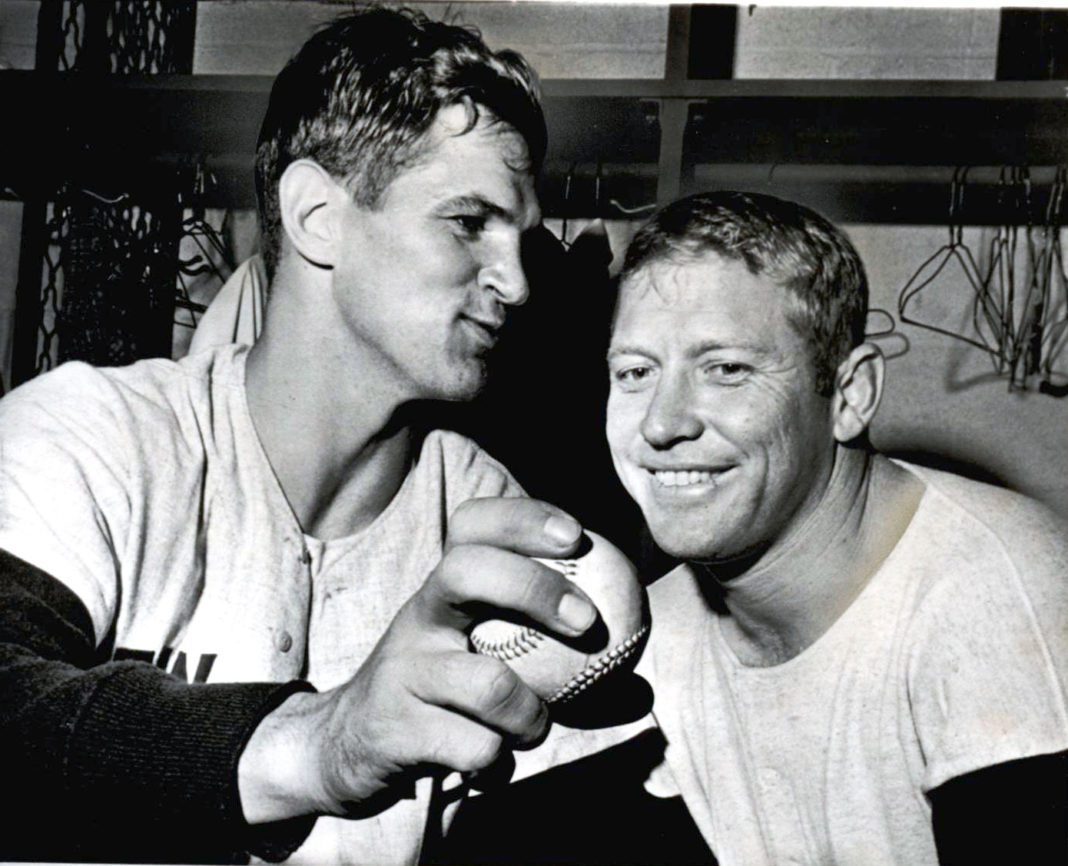At 50 majestic feet tall, Chief Standing Brave proudly and heroically stands sentinel over Big Cabin, a quiet community in the southern tip of Craig County. The town, once proclaimed the safest place in Oklahoma, adjoins one of the busiest highway intersections in the state.
Big Cabin, with an estimated population of about 250, is home to two busy truck stops across U.S. 69, and is two miles south of the Will Rogers Turnpike (Interstate 44).
The Chief Standing Brave statue, with a 100-feather headdress, spear and shield emblazoned with the Oklahoma state flag, guards the area from his post at the Woodshed truckstop. Erected in 2001, the steel, wire mesh-and-fiberglass statue, built by an auto body mechanic, weighs a reported 15,000 pounds, and is roughly modeled after a similar roadside attraction in Maine.
According to the Oklahoma Tourism and Recreation Department, the original truck stop owner first tried to buy the Maine statue and bring it to Oklahoma; he was unfortunately unsuccessful, and decided instead to have a similar one built for his business.
Cody Praytor, the Woodshed’s current manager, says Chief Standing Brave is the first thing drivers see when they get off the turnpike and head into town. The statue requires little maintenance and is quite an attraction.
“We see people out there taking pictures all the time,” he says.
Big Cabin is nearly equidistant between Adair and Vinita, the Craig County seat. Miami is another 30 miles to the north, and Tulsa is about 55 miles to the southwest.
According to a history compiled by the Craig County Genealogical Society, the town was named for a local landmark, a plank cabin that existed near the place where the Missouri, Kansas and Texas Railway built a switch in 1871. Another historical account maintains that the town took its name from nearby Cabin Creek. Incorporation did not come until 1958, but before that, the settlement gained a reputation for producing hay; the town was proclaimed by one local hay producer as the “hay capital of the world.”
Southeast of town lies one of Oklahoma’s more noteworthy historic sites, the Cabin Creek Battlefield. Information from the Oklahoma Historical Society states the battlefield, located on the once-important Texas Road that ran between Kansas and Texas, was the site of two key Native American Territory engagements between Union and Confederate forces during the Civil War.
Information compiled by the state Historical Society shows the Texas Road was used by Native Americans, explorers, the U.S. Army, pioneer immigrants, trail herds and traders. During the Civil War, it became the conduit for moving military supplies from Fort Scott, Kan., to Fort Gibson in Indian Territory. The two skirmishes, both in 1863, were tied to use of the Texas Road during the war.
In today’s more peaceful times, former City Clerk Linda Purcell notes that Big Cabin is a mostly quiet place. She has in her possession a clipping from a county newspaper proclaiming Big Cabin, in the view of an online information service, as “the safest place in Oklahoma.”
She said there is no longer a police department, with the area patrolled by Craig County sheriff’s deputies.
“We’re just a small town with two big truck stops,” she says. Despite its small size, it’s worth a trip.
Baseball Ties
Big Cabin was the birthplace of New York Yankees pitching standout Ralph Terry, born Jan. 9, 1936. The right-hander helped lead the Yankees to five straight world championship series in the early 1960s. In a 12-year major league career, Terry also pitched for the Kansas City Athletics, Cleveland Indians (now Guardians) and the New York Mets, and won 107 games in the majors.
Terry won the Most Valuable Player of the 1962 World Series. After retiring from baseball, he turned to professional golf and played briefly on the PGA Tour and the Senior Tour before his death in 2022.
For More Information
Big Cabin City Hall
918-783-5855
Oklahoma Historical Society
918-456-2751
okhistory.org/sites/cabincreek

























